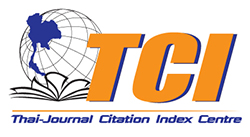THE DEVELOPMENT OF GAME FOR CULTURAL TOURISM BY USING GAMIFICATION CONCEPT: NAN PROVINCE
Keywords:
Gamification, Game, Art Style in Game, Cultural TourismAbstract
The research on game media to promote tourism and culture by using the concept of gamification has the following objectives: 1) Study the concept of gamification in order to find the principle of gamification design for games used in promoting Thai culture related to cultural tourism in specific areas. 2) Study the visual aesthetics aspect of the game to guide the visual design that enhance and encourage cultural tourism. Mixed Research Method was used to study the concept of gamification and game art design. This study utilized an expert interview method to obtain data from both gamification designers and game designers. The survey was used to obtain data samples related to game behavior’s, gaming motivation, game attachment, aesthetics and art styles in games from the prospective Generation-Y consumers (22-39 years of age) who frequent mobile games and tourism. The results suggested the concept of gamification design as the following: 1) The main target group is the explorer-type players who favor exploration and flexibility. 2) Freedom/flexibility is a contributing factor in encouraging the users to play. 3) In-game progression and character development is essential to continued engagement. 4) The stylized art style which involves exaggeration and non-realistic shapes helps enhance imagination when combines with minimalism art style.
References
ไกรฤกษ์ ปิ่นแก้ว. การพัฒนานโยบายการท่องเที่ยวเชิงวัฒนธรรมโดยใช้หลักการจัดการโซ่อุปทานการท่องเที่ยว. กรุงเทพฯ : มหาวิทยาลัยกรุงเทพ, 2557.
ชนัตถ์ พูนเดช. “แนวทางการจัดการเรียนรู้ด้วยแนวคิดเกมมิฟิเคชัน.” วารสารศึกษาศาสตร์ มหาวิทยาลัยนเรศวร, ปีที่ 12 ฉบับที่ 3 (กรกฎาคม–กันยายน 2559): 331-339.
Bartle, Richard. “Virtual Worlds: Why People Play.” ResearchGate. https://www.researchgate.net/publication/308073596_Virtual_worlds_Why_people_play.
Chou, Yu-Kai. Actionable Gamification–Beyond Points, Badges, and Leaderboards. California: Octalysis Media, 2014.
Growthengineering. “Does Gamification Inspire Intrinsic Motivation.” Gamification. https://www.growthengineering.co.uk/intrinsic-motivation-gamification/.
Kim, Amy Jo. “Social Engagement: who’s playing? how do they like to engage?. https://amyjokim.com/blog/2012/09/19/social-engagement-whos-playing-how-do-they-like-to-engage/.
Marczewski, Andrzej. “HEXAD: A Player Type Framework for Gamification Design.” Gamification UK. https://www.gamified.uk/user-types/.
Marczewski, Andrzej. “The Intrinsic Motivation RAMP.” Gamification UK. https://www.gamified.uk/gamification-framework/the-intrinsic-motivation-ramp/.
Omm Gallery. “ศิลปะที่ว่าด้วย "ความน้อย" (Minimalist Theory).” https://es-la.facebook.com/notes/omm-gallery/ศิลปะที่ว่าด้วย-ความน้อย-minimalist-theory/1315140698532174/.
Pink, Daniel H. Drive: The Surprising Truth About What Motivates Us. New York: Riverhead Books, 2009.
Simões, Jorge et al. “A Gamification Framework to Improve Participation in Social Learning Environments.” ResearchGate. https://www.researchgate.net/publication/281273463_A_gamification_framework_to_improve_participation_in_social_learning_environments.
Solarski, Chris. Drawing Basics and Video Game Art. New York: Watson-Guptill Publications, 2012.
WP. “สถิติผู้ใช้ดิจิทัลทั่วโลก “ไทย” เสพติดเน็ตมากสุดในโลก.” Brand Buffe. https://www.brandbuffet.in.th/2018/02/global-and-thailand-digital-report-2018/.
Downloads
Published
Issue
Section
License
ลิขสิทธิ์ของบทความเป็นของเจ้าของบทความ บทความที่ได้รับการตีพิมพ์ถือเป็นทัศนะของผู้เขียน
กองบรรณาธิการไม่จำเป็นต้องเห็นด้วยและไม่รับผิดชอบต่อบทความนั้น






